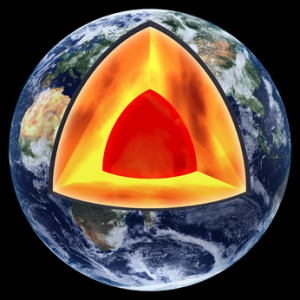 Shopping cart 0
Shopping cart 0
Free shipping
No products in shopping cart
Continue shopping
We believe cosmic influences or the Earth’s magnetic field cause the lattice networks described above. There may be quite a few types of radiation from the Earth’s interior in addition to terrestrial radiation generated by underground running water (aquifers/water veins), rock fractures or faults within the Earth (geologic factors).
Please see the detailed information page about water veins.
Cracks and crevices in the rock of our inner Earth are called rock fractures. They are like openings and passages that allow natural terrestrial radiation to reach the surface easily. Different rock layers have different fields of electrical voltages. When a rock breaks, it causes these layers to move, which results in higher concentrations of electromagnetic radiation on the Earth’s surface.

Faults are interconnected layers of earth that extend over several hundred meters. Caused by volcanoes or by glaciers during the Ice Age, faults usually occur in or adjacent to medium to high mountains. When different layers of rock merge and react to one another, the interaction of varying electrical conditions and terrestrial radiation creates intense energetic influences.
Based on what individuals have reported experiencing , we believe that these influences manifest themselves primarily as psychological traits or tendencies. For example, someone who lives on a fault may have be inclined toward depression or aggressive behavior.
Terrestrial radiation exists everywhere on Earth. Scientists maintain that this radiation is a consequence of radioactive elements left over from the Earth’s formation. The decay of these elements produces gases. Radon, for example, leaks continuously from the ground and can be inhaled easily.

In addition to these gases, the Earth also emits alpha and beta radiation. Alpha radiation is considered to be quite “safe” because its particles don’t usually penetrate deeper than the topmost layers of the skin. Beta radiation behaves in a similar fashion, although it can cause serious skin irradiations, burns, and cancer with longer exposure. Various types of cancer have been observed in cases where beta radiation had penetrated the body.
Radiation intensity is measured in millisievert per year. In Germany, the average terrestrial radiation exposure is about 0.4 millisievert per year (mSv/a). According to a study by the World Health Organization (WHO), a radiation dose of 50 mSv/a is the highest permissible limit for people who work with radiation professionally. An average annual radiation exposure not exceeding 20 mSv is considered to be harmless to health. (http://www.world-nuclear.org/info/Safety-and-Security/Radiation-and-Health/Nuclear-Radiation-and-Health-Effects/)
Share
[addtoany buttons="copy_link,linkedin,x,facebook"]